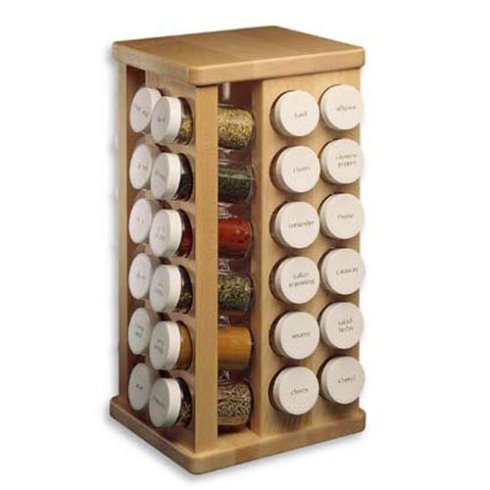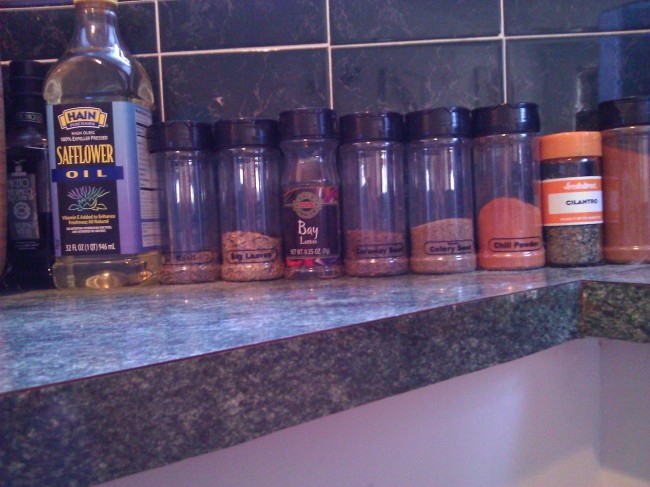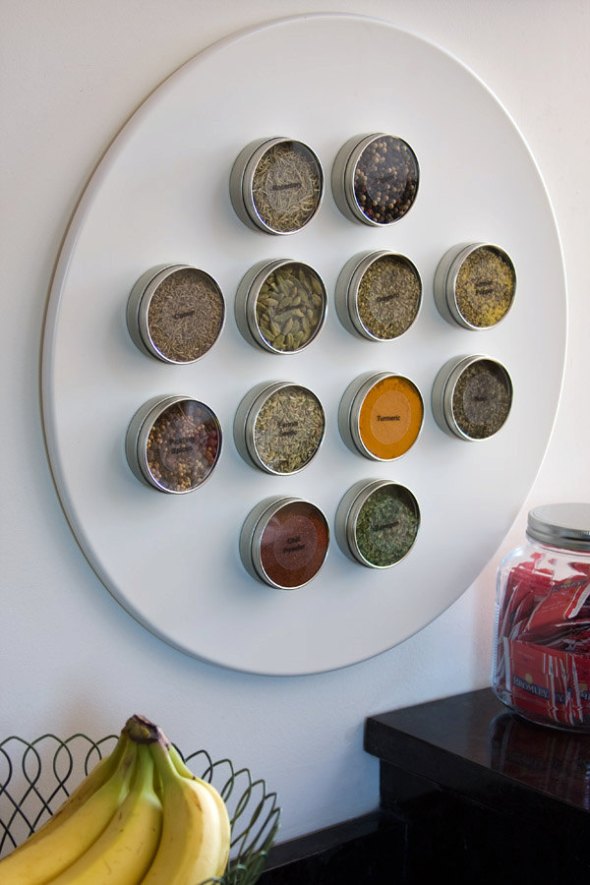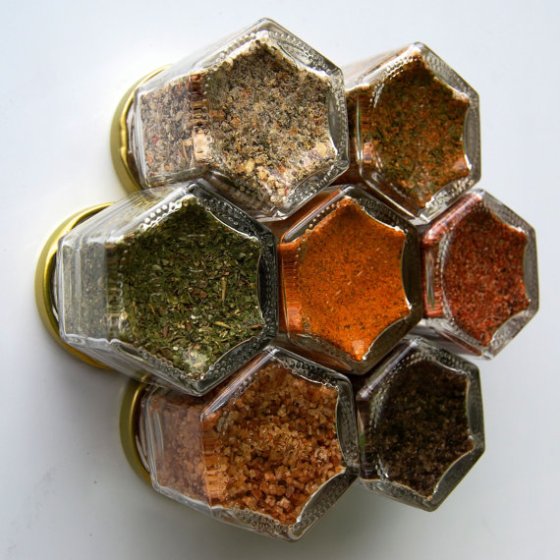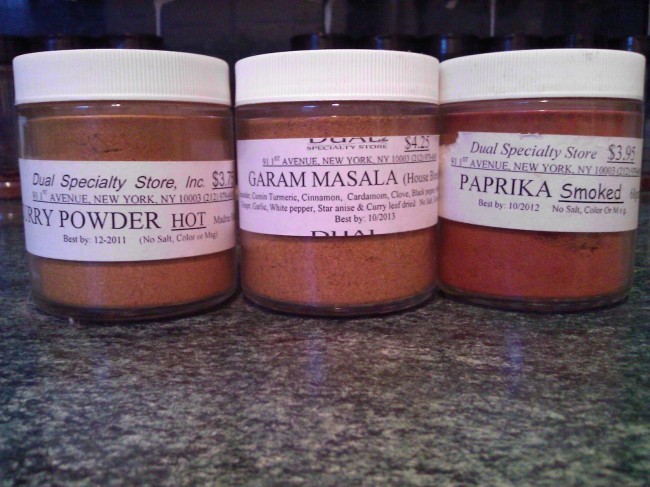There are so many variables to consider when you begin cooking for yourself on a regular basis. Many seem really obvious in retrospect, and I suspect a few readers will find some obvious immediately.
One integral part of cooking is having a good selection of spices in your kitchen, because they permit you to make things like low-fat or no-fat food taste incredible. When you eat fatty food, you are being comforted by that fat. Your body is going, MMMmmmm now I won’t starve after having hunted that mammoth for 2 days. Learning to use spices cleverly and without fear will help you replace the unhealthy fats and make you wonder why you felt you needed to cook with them to begin with, because your food will taste crazy amazing. I am a food snob, I can’t get enough of fried chicken or pizza and I promise you this is absolutely the truth.
Some basics to keep in mind with dry spices: Try to keep them refilled before they completely run out. Keep them out of direct sunlight if possible, and away from moisture. This can be accomplished simply by storing them all in a drawer or a cupboard. However, if you use them often or enjoy displaying them, there are practically infinite pre-filled spice racks you can buy from stores like Amazon.com, Bed Bath & Beyond, William & Sonoma if you’re fancy, Etsy, and Macy’s, and they exist in many different styles. They will generally have a smaller number of spices than you would like, but they LOOK nice on your counter. Here is an example of an absurdly high-quality spice-rack (http://www.amazon.com/J-K-Adams–16-Inch-Carousel-Included/dp/B000FJPO5C/ref=sr_1_1?s=kitchen&ie=UTF8&qid=1374183747&sr=1-1&keywords=spice+rack)–it is gorgeous and has 48 separate spices.
It’s also $223.95 are you KIDDING ME?! God I wish I had the money to just go, whoopty doo I want a $223.95 spice rack, so I shall have it! Now bring me my steed, wench! Anyway, as you can tell by now, I am not a millionaire and I live in an East Village apartment (read: less counter space than the rest of the world gets to have in the kitchen) so I used the ol’ noggin and figured out a solution. I lined the back of the walls of all my counter space with spice jars, mostly really cheap ones I found online that I bought in bulk that came with labels. Here’s what it looks like:
As you can see, I don’t have a fancy-pants beautiful wooden or chrome spice rack, but I also don’t have anything taking up space on my counter. Plus, the spices are really easy to reach and it looks pretty neat in my opinion. Feel free to steal this idea if you are lacking in counter space. Another good solution for a tight space is to glue magnets to the tops of spice bottles, and then another magnetic strip to the underside of cabinets, then you can literally magnetically stick bottles of spices under your cabinets. This is something I haven’t seen anyone do, me and Matt thought of it but didn’t have enough height between the cabinets and counter to make it feasible. And finally a third alternative to the traditional spice rack that saves space is short, magnetic spice tins built to go on your refrigerator or other metal surfaces. Yes, something this cool exists. Here’s a picture of one from Etsy (http://www.etsy.com/listing/106772935/magnetic-spice-tins-food-safe-round?ref=shop_home_active):
Or you can go the honeycomb route and get hexagons–here’s one filled with grilling spices (http://www.etsy.com/listing/150855349/25-off-grilling-kit-7-hand-stamped?ref=shop_home_active):
You can arrange those magnet tins however you like.
In my mind, there are “levels” of spices, meaning, you use some all the time, some sometimes, and some are fancy special occasion spices. Every person has different levels. I like having as many spices around as humanly possible but they are expensive so it’s good to start off with the basics and build on that. Try not to buy the absolute cheapest brand of spice you can find–if it’s 1 dollars for a large bottle in the supermarket, it’s probably not a good quality spice. That means, the ingredients themselves may not be as nice and the spices themselves may also be older than you’d like. McCormick and Spice Islands are both very high-quality brands. However, I would not recommend getting all your spices from those brands because it’ll get expensive very quickly. Try to find an Indian or Chinese grocery store near you that carries spices in bulk and you can refill a smaller bottle with spice that way (just make sure you keep the extra in an airtight container in the dark, preferably in a cupboard). There’s a wonderful place in the East Village called Dual Specialty Store (http://www.dualspecialty.com/) that has a plethora of whole, cut, and ground spices, as well as extracts, rice, beans, and pretty much anything you can think of if you’re serious about cooking for an unusually decent price. They also have glass jars of heavenly specialty spice mixes you will have somewhat of a difficult time finding elsewhere. They are of very high quality and low price… I have a few:
They do not have MSG and give you “best by” dates, which I promptly ignore. Spices lose potency over time rather than spoil, so in the cases of the smoked paprika and curry powder, I just use a little more than I normally would and it’s just as good as ever. For spices such as these that you won’t use often, don’t buy in bulk. A little dab ‘l do ya.
Now it’s time to figure out what spices you need. I will provide three levels of spices; level 1 contains spices that are practically necessary, level 2 are those that add more complexity and won’t be used in every dish, and level 3 spices are what I deem the really fun, fancy stuff that you aren’t likely to use often, but that will offer a real wow factor and a symphony of experience for your McDonald’s-saturated taste buds. These groupings are subjective and of my own design based on what I believe is used most commonly in United Statesean cooking (whatever that means), so feel free to be like, “Hey that’s stupid, I NEED saffron every day of my life, weirdo!” (If you are that person, you must have a fabulous bank account, please donate to me cuz I’m poor as HELL)
Even if you are a regular cook, I recommend reading the list below. I cook all the time and learned a lot researching some of these spices I use all the time. It’s been a lot of fun! One disclaimer: When I say something like, “used frequently in Indian dishes” I don’t mean to say that something isn’t also used frequently in another type of cooking, it’s an indication that I’m highlighting the types of cooking I tend to work within. But I encourage exploring cooking styles from other areas of the world and seeing how spices are used differently in each geographic and pan- space. Please not that many of the images below were taken by photographers that require attribution. See notes at the bottom of the article for the image’s creator if such information was made available to me.
Level 1: The Basics
- Basil (dried): Fantastic on light proteins like fish and chicken and in soups, a necessity in practically all Italian cooking. This is great for making red spaghetti gravies (sauces for us non-Italians) rather than using fresh basil (which is fantastic in any number of other situations), because it’s much more potent than fresh basil. Vitamin-wise, fresh basil will have more to it, but the dried version is still packed with Vitamin K.
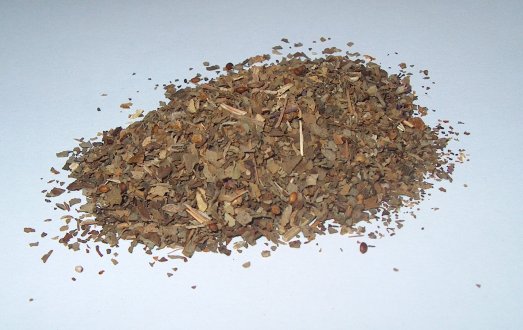
- Bay leaves (whole): If you do not have whole bay leaves you can not make spaghetti gravy–ever. It is a necessity. You stick one or two in the sauce and basically that’s it. Just don’t eat it. They are bitter as hell. This is why I say whole leaves rather than crushed up. If you get them crushed, it’s not as if you can’t eat them but they’re kinda gross. So if you want to impart more of the bay leave flavor to your gravy or soup, just put more full leaves in there. If you can, fish them out before serving so someone doesn’t accidentally ingest one. Especially since it isn’t pleasant going through your digestive tract whole. Oh and by the way, there is a semi-myth that bay leaves are poisonous… this is sort of true. But they don’t sell any of the poisonous varieties for culinary use, so don’t worry. Just don’t, uh, pick your own on the side of the road or something.
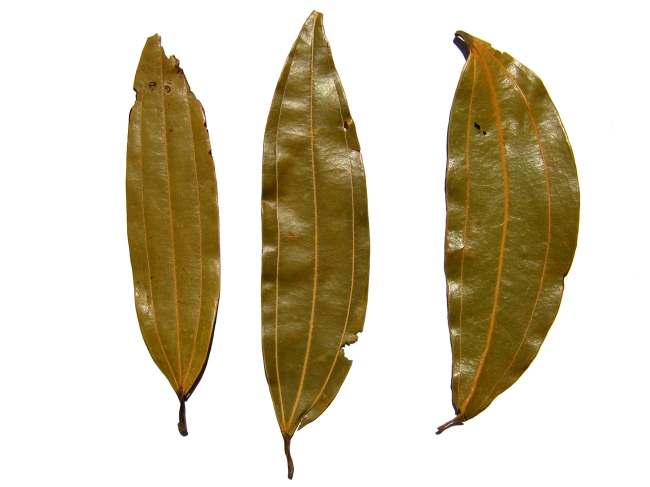
- Black pepper: Ah the pepper of peppers. You need black pepper, it goes with practically everything. It can get expensive so buying in bulk is not a bad idea. However, if you are one to add salt and pepper at the dinner table, get a small number of whole black pepper kernels and a grinder, because the pepper flavor will be fresher and the pieces of pepper slightly larger. Just don’t use too much or you’ll swallow some the wrong way and start hacking up a lung.
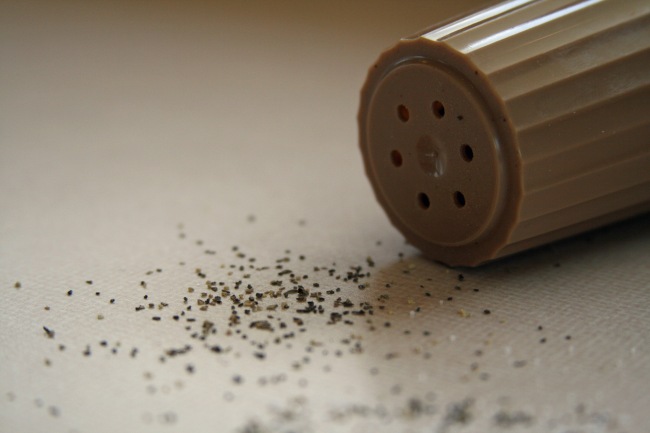
- Cayenne pepper: Cayenne pepper is literally comprised of a single plant, ground up for our delight. It is to be used when you need an especially spicy dish, and a fantastic ingredient in homemade vinegar sauces and hot sauces, such as hot wings sauce, mmm… Be careful and use tiny amounts and taste your dish to see if you need more. You can work with a little more abandon if you use chili powder, so if you’re new to cooking, use chili powder and work your way up. And don’t do something stupid like sprinkle some cayenne pepper into a dish with your fingers and then wipe your eyes or uhm go to the bathroom, because the result will be some part of you on fire that you reeeeeeeally don’t want on fire. On the plus side, for anyone who cares, cayenne pepper has capsaicin… that’s an anti-inflammatory and a blood-flow increasing agent… for… places that need… blood flow… Just looking at it makes my eyes burn.
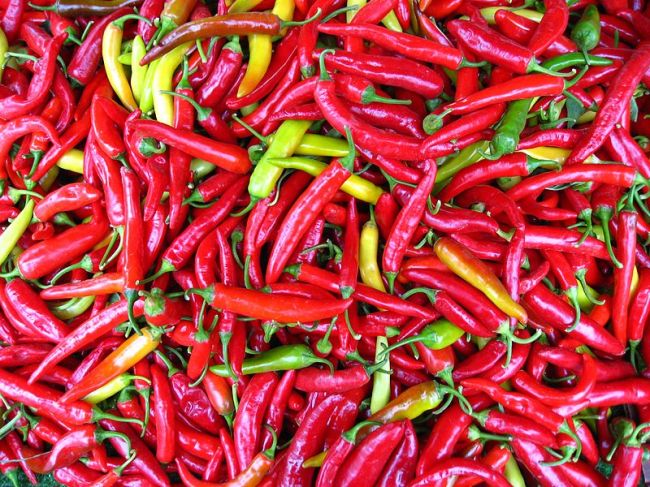
- Chili powder: Whoa careful, tiger. It’s called chili powder because it’s from CHILIES. That is, a mixture of different chilies and sometimes a few other spices, giving it a well-rounded, hot flavor. And it is generally milder than cayenne pepper, which is made from a single type of pepper and no additional spices. Since chili pepper is comprised of a mixture of chilies, it is less expensive than cayenne pepper and if you’re in a financial pickle you can live with only this powder rather than chili powder and cayenne pepper. If you’re thinking long-term, it probably all comes out the same because you won’t need as much cayenne pepper. I like having both because they have distinct flavors. When using the chili powder, you may very well need to use less than you think, so add in small amounts. This is a good item to add to anything for some heat, but particularly dishes from south of the border, and, surprise, homemade chili. Oh and guess what, chili powder has Vitamins A and C, and some necessarily minerals. That’s convenient.
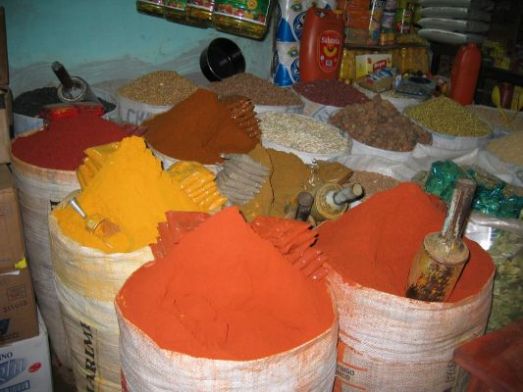
- Cilantro, or, Chinese Parsley, or, Coriander: Dried cilantro is a staple in most peoples’ kitchens, so it’s on this list. However I never ever use it and I love cilantro. The dried version barely tastes like anything to me, whereas fresh cilantro is wonderfully flavorful. So I recommend you use fresh cilantro instead but keep the dried stuff around for emergencies. It’s a requirement for all Mexican cooking. The herb is rich in anti-oxidants and there was a study in the late 1990s done on a bunch of rats that showed a decrease in total cholesterol and triglycerides (here’s a link to the article’s abstract: http://link.springer.com/article/10.1023%2FA%3A1007975430328).
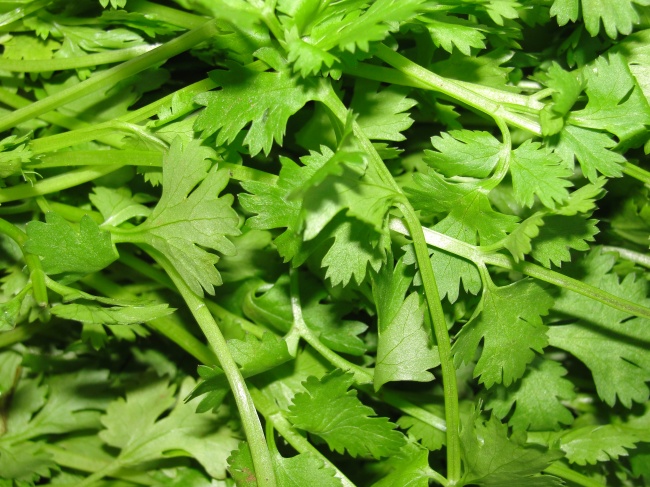
- Cinnamon (ground): You require cinnamon to make about 80% of your holiday pies, plus it’s great in other desserts. Don’t be shy with it. And you’ll find it works in a surprising number of savory Indian, Thai, and Mediterranean meals, especially soups. It is also a delight as if you sprinkle just a tidbit into coffee, certain teas, and warm alcoholic holiday beverages. Cinnamon will help maintain the glucose levels in your blood, so if you have diabetes, it couldn’t hurt to keep this in your diet. Also has antioxidant properties! Do NOT do the cinnamon challenge. See any video of someone doing the cinnamon challenge on YouTube.com for motivation to not be an idiot.
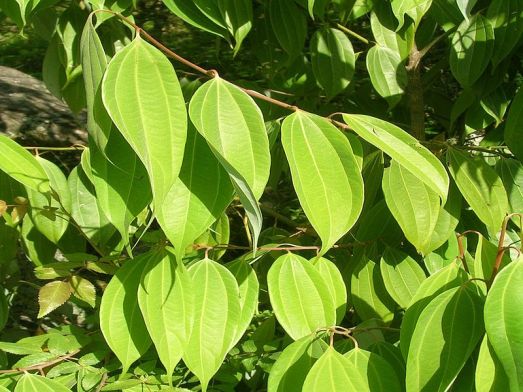
- Cloves (ground): Do not use more than a pinch. Do not use more than a pinch. Do not use more than a pinch. Do not use more than a pinch. This is a very potent spice, very hot, great for use in baked goods and all things related to Christmas. Do not use more than a pinch. Weird fact: clove oil has been extracted for use in treating dental pain. And it’s a little bit of a laxative, too. Who knew? DO NOT USE MORE THAN A PINCH. Clove powder is unsuspectingly potent.
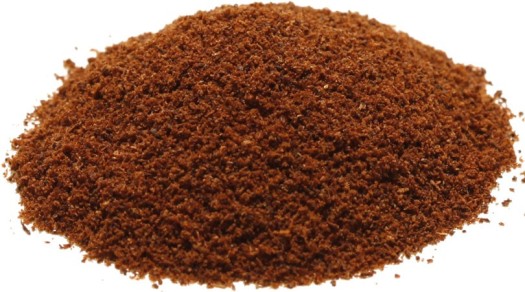
- Cream of tartar: If you aren’t a cook then you have no idea what this is, and you are saying, I don’t need this, asshole. Yes, yes, you do. If ever you bake, suddenly the recipe will call for cream of tartar and you’ll curse your way all the way to the supermarket. Technically, it is potassium hydrogen tartrate and a byproduct of winemaking. Now you can bore people at parties with a useless fact! You will need this (when baking) whenever working with egg whites to whip them up and it helps stabilize whipped cream… a.k.a. it keeps it looking gorgeous and maintaining a beautiful shape and texture. I don’t like the consistency of boiled veggies, but if you do, you know that it discolors the veggies… cream of tartar will offset that icky process and your green beans will look less grey and scary. If you are a super green awesome hippie person, mix it with an acidic liquid and it will clean metals. Like that spotty tea kettle that claims to be “stainless” steel making your stove look wretched. (McCormick: please don’t sue me for using this image… if I used a picture of cream of tartar alone it looks like an illegal substance… HEY EVERYONE, USE McCormick’s Cream of Tartar, the best ever!!! Also in seriousness, see my section about the Steak Seasoning below)
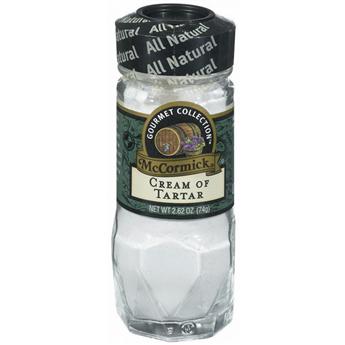
- Cumin (ground): A very distinct flavor that comes from a seed and a staple for most Mexican foods, but also in a lot of Asian foods, especially Indian. It is the key flavor in chicken fajitas and chili stew, ergo, without it, you are lost. In general, if you’re making some kind of hearty wintry stew, adding a bit of cumin will make it taste more satisfying. Also of note, cumin contains a decent amount of iron, so if you have an iron deficiency, cooking with cumin will help you with that wretched faint feeling. You can purchase cumin in whole form and ground them with a mortar and pestle if you like, which will make for a more flavorful, fresh flavor. But you will be slightly crankier, having to add an extra step to your cooking.
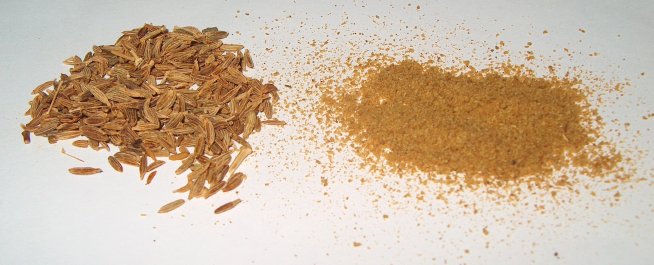
- Curry powder (mild, medium, and/or hot): This is a staple for me, but might be better in some peoples’ intermediate or special spices lists. It all depends on what kind of cooking you do. I love Indian food, so it seems completely necessary to have curry on hand all the time. I prefer to have mild because you can always add more heat with chili powder or cayenne pepper. Also I’m kind of a wimp, heat-wise. Curry powder is actually a mix of many different spices, so according to my own private rules that mean nothing at all it’s “cheating” but with curry it’s a very LONG list of spices. Who has the time to mix all those things?! Thus the best thing to do is buy curry and then if you want to feature one of its ingredients you can always add that separately. I always think of curry as Indian but it is used in all sorts of places like Trinidad, China, Japan, Vietnam, Malaysia, Thailand… the list goes on and on. And each geographic region uses different combinations and proportions of spices to create their curry. If you find yourself in a specialty market, make your way towards the spices and see if you can find a Burmese or Philippine curry. It can be used as a dry rub, but is also excellent in soups–especially with lentils–and in cream sauces.
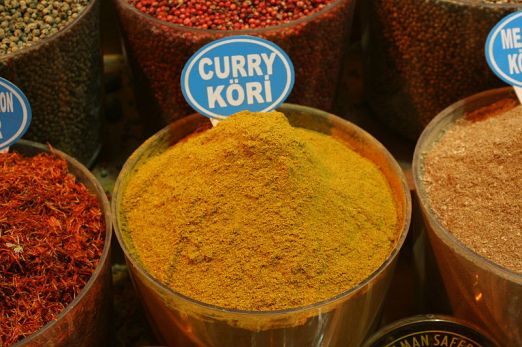
- Garlic powder: Waaaah I don’t wanna chop up a tiny piece of garlic or use my garlic press and then go through the irritation of having to actually clean the damn thing. Bam. Garlic powder. Good for all meats, rice, etc. A full explanation detailing why you may want to use garlic powder instead of or in addition to real garlic (don’t take this the wrong way, I use fresh garlic constantly), see the onion powder section below.
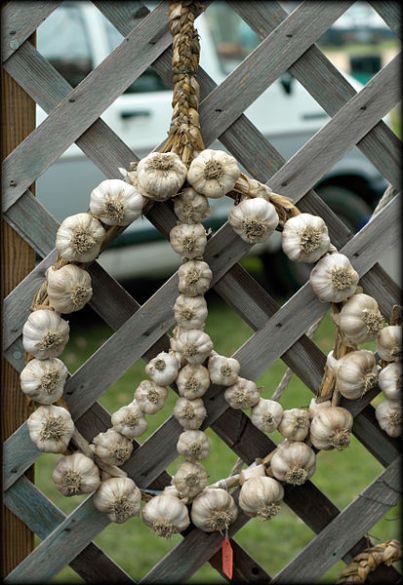
- Ginger powder: I love ginger powder. In addition to something you can use in any number of desserts and Indian, Chinese, and Mediterranean foods. It adds a sweetish bite to your meal, I love it. Fresh ginger is oftentimes going to be a better choice, but it’s a pain in the ass to get it sometimes so have ginger powder on hand. It has a lot of verified and unverified but sworn-by medicinal properties. For example, if you exercise a lot, eating ginger regularly will help with the muscle pain by 25% (http://www.sciencedaily.com/releases/2010/05/100519131130.htm). Also, ginger can be put into tea to settle your tummy. In the more folk-medicine angle of things, if you are getting a migraine, try having tea with ginger because it can help push it off according to many (I’ve done it myself with some good results). Ginger also has a lot of minerals and vitamins, too. Gee, what’s wrong with ginger, it seems like the perfect spice! Weeeeeeell it’s not because if you have serious bowel problems it can exacerbate things so you should steer clear, and if you get gallstones, don’t have much of it because it will make you produce more bile. Gallstone people (sorry, Dad), no gingersnaps for you! But other people, you’re good to go. Oh, one more thing: when cooking with ginger, don’t use too much or your food will suddenly taste like soap. If you’re ever in Haikou, Hainan, China, you’ll see varieties of ginger just like these.
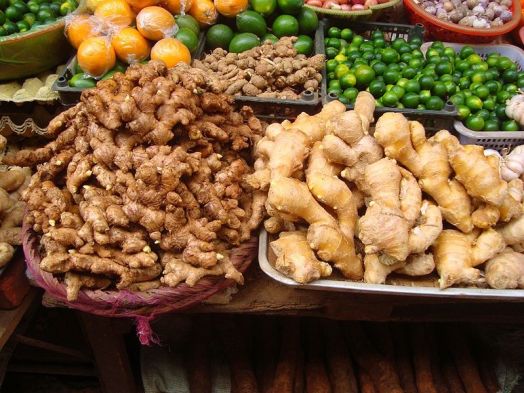
- McCormick’s Grill Mates Montreal Steak Seasoning: I am not a big fan of spice mixes, for example, I consider “Italian seasoning mix” to be cheating (I’m an asshole, you should use it, it saves time). But this mix is mystically brilliant. I have used it with any recipe where I’m substituting ground turkey for beef and I want the meat to taste more beefy or substantial. I have also used it on steaks and on tilapia. Meatballs and meatloaf. I am convinced there is nothing that it can’t improve (other than desserts, gross). Seriously, buy it, and use liberally. Watch the magic happen. And it is MSG free. YAAAAAAAY. Thanks McCormick, you rule.
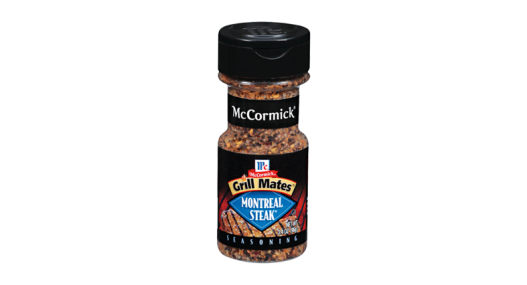
- Mustard (ground): When I first started cooking, I couldn’t understand why I needed ground mustard. Here’s why: it’s in a gazillion recipes, including deviled eggs, which you can’t really make without it. I came across so many recipes that weren’t “exotic” or anything requiring this spice, I finally gave in and said, OKAY OKAY I get it. You need to have it. It’s tangy, bitter, and great to make your own sauces. It’s also wonderful in soups and homemade dressings (which I strongly recommend because they throw a lot of unnecessary junk in those things and yours will taste better, I guarantee it).
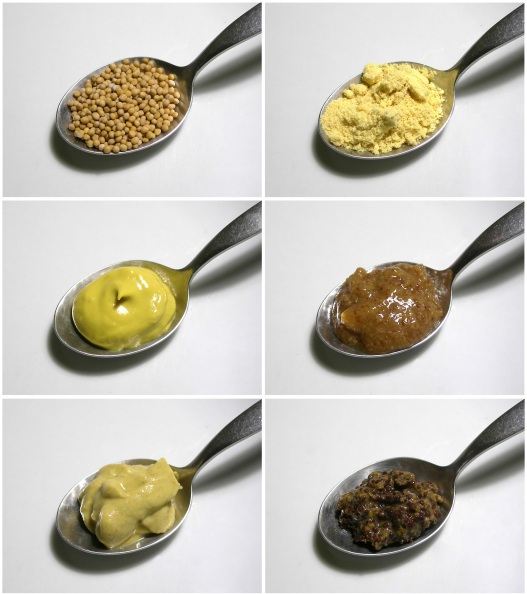
- Nutmeg (ground): A little goes a long way. It is very potent, sharp, warming, and a little sweet, generally used for spicy sweet baked goods. It’s also wonderful in Indonesian and Indian fare. A rarity amongst spices it actually has a fat content so if you’re watching your figure, keep that in mind, but come on, you only use a little. It has a fantastic fragrance so if you’re having some hot cocoa or tea and want a little extra aroma, a teensy bit will make it smell sensational. And of course, it’s a necessity in egg nog. Apparently, it can make you a bit sleepy, which is why it is added to warm milk to give it a soporific quality. Other benefits include decrease in blood pressure and cholesterol, improved circulation (there goes that sex drive benefit again), and improved concentration.
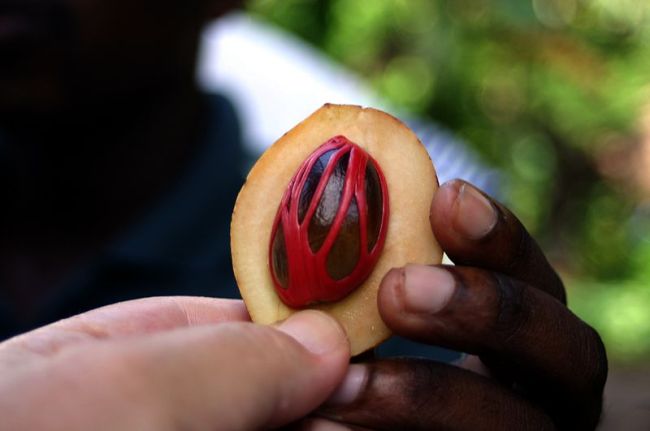
- Old Bay Seasoning: A mixture of spices designed for use with any and all sea creatures. Especially great if you’re making some crab… mmmmm… but don’t be afraid to experiment and use it with other things to see what happens…. officially it’s for seasoning “seafood, poultry, salads, meats” but people usually use it for seafood. Nonetheless, you may find yourself throwing it in non-seafood items and loving it. Completely non-surprising fact: Old Bay Seasoning comes to us from Maryland. Thanks, crab-people! https://www.youtube.com/watch?v=uihJgvbiMjs (anyone remember this one?)
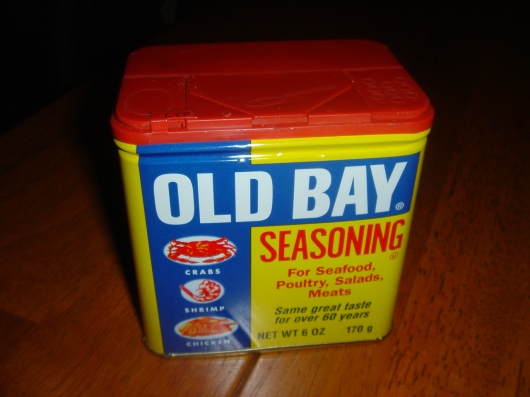
- Onion powder: Recently, a friend of mine asked me why I had onion powder (or garlic powder) when I use real onions and real garlic all the time. Well, that’s a good question. One reason is you don’t have the time to chop up an onion but you want to impart the flavor of onion into something such as a sauce. Another reason is that the onion itself can burn in situations where a powder wouldn’t. This situation, for example, presents when you’re baking a chicken and want to season the outside. If you put a bunch of chopped onion on top, it would likely singe. However, sprinkling it with a bunch of onion powder will saturates the flavor of onions to the chicken’s skin sans (unwanted) blackening. Finally, I use it for something I call layering–just what it sounds like, I use onions and then I add onion powder to the recipe as well. This way I’ve ensured that there is onion to chew on and plenty of onion flavor in the dish. You can add onion powder to chicken, fish, beef, rice… it’s fantastic.
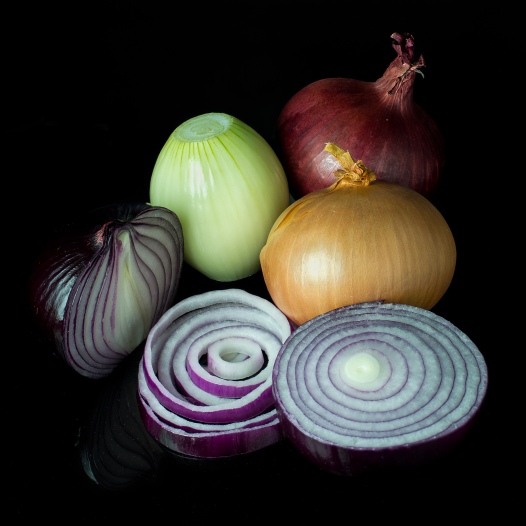
- Oregano, or Sweet Marjoram: Yet another Italian staple, oregano is far more flavorful when dried. I’ve never bothered using fresh oregano, whereas I only use fresh cilantro; it really depends on the herb. This is an herb used pretty much across the entire globe, like salt or pepper–you can find it almost everywhere (for example, it’s a common ingredient in kebabs yuuuum) and you should feel comfortable experimenting with it so long as you are frugal. Oregano is surprisingly strong and, as mentioned with some other Italian seasonings, is wonderful not only in red gravies but with chicken and fish. Many people love sprinkling it on their pizza. But if you REALLY wanna look sophisticated while eating your slice, add whole fresh leaves of basil to it. Sophisticated sexy pizza! It’s also an anti-oxidant, along with so many other herbs.
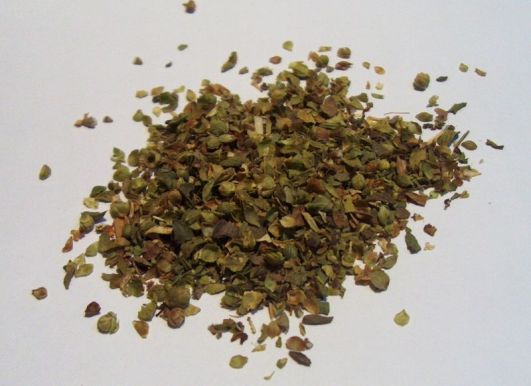
- Paprika: There are many kinds of paprika, right now I’m speaking of the generic paprika you’d find in a grocery store. Regular paprika is moderately sweet but generally used in savory meals, and is a necessity in deviled eggs. I always use it when I bake chicken to flavor the skin along with onion powder, garlic powder, salt, and black pepper. It should be experimented with–it is possibly one of the most underutilized spices and it’s so good for you. It is packed with Vitamin C and another capsaicin spice. So I guess paprika plus cayenne pepper can lead to a very romantic evening. Give it a sniff and see if your meal might benefit from a pinch! Once I made “triple-paprika soup” (you guessed it, featuring three separate paprikas) and it was really exciting.
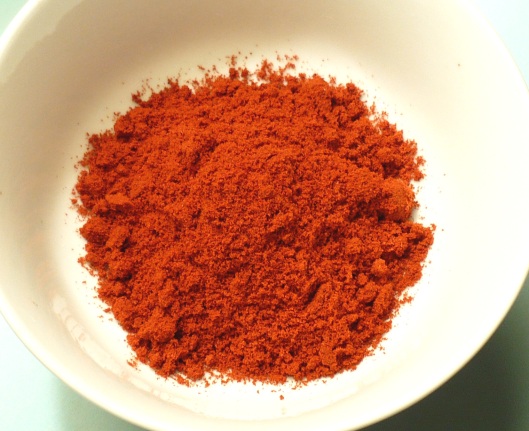
- Parsley (Italian): Another major staple in Italian cooking, a requirement in red gravies and great with chicken and fish. It has a number of vitamins and minerals, so it’s wonderful to add in either fresh or dried form to a chicken soup if you’re getting over being sick. It is commonly used as a garnish, so if you want to be fancy, get some fresh parsley and throw it on top of something. I personally think it’s nice to keep it a whole sprig if you do that so someone has the option to remove it if you don’t like parsley that much. Do not confuse this with cilantro, which is also known as coriander and Chinese parsley. This is one of the four fines herbes, a combination of four herbs used in Mediterranean cooking, especially in France.
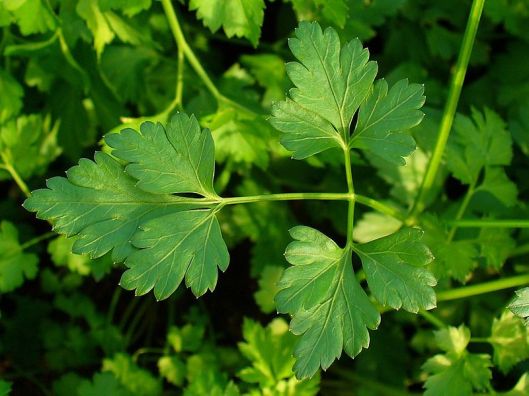
- Rosemary: When I think rosemary, I think chicken. It’s one of those evergreen spices you can use when cooking chicken that will work without fail. But don’t stop there, try it with lamb, in soups, or if you want rosemary bread but don’t have it on hand, mix it into some butter to create rosemary butter (uh, YES PLEASE). It is not so much a flavorful spice (though there is a hint of mint to it) as it is aromatic and most our ability to taste comes more from our sense of smell. This herb is good if you have asthma attacks as it decreases inflammation. It’s also wonderful if you’re getting over a cold–it’s mild so you’ll be able to stomach it, and it will stimulate your immune system.
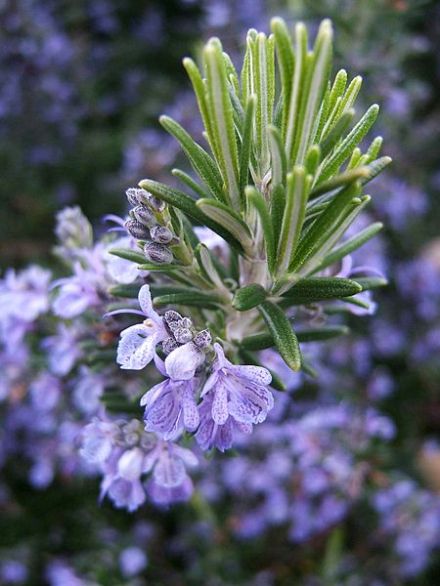
- Salt (iodized) or fine grain or flaky sea-salt: Do you know what goiter is? Neither do I! That’s because it comes primarily by an iodine deficiency that causes your thyroid gland to enlarge and since the 1920s salt companies have added iodine to our salt so we don’t have to deal with goiter. However, trace amounts of iodine are found in sea salt, which contains less sodium, leading me to conclude that the best salt option is sea salt. And if you eat a balanced diet you will also get trace amounts of iodine from other sources. In regards to grain size, I only say flaky or thin-grain because it’ll disintegrate quickly when you cook and can be used to season already cooked food. Large chunks of salt on food is generally not that great (unless it’s on a vanilla ice cream cone with caramel sauce… try it and thank me later). Flaky is particularly good if you are roasting seeds (e.g., pumpkin seeds, delicious). One more note: use the smallest amount of salt you think you need, then taste and add. Too much salt is revolting, not enough is fixable.
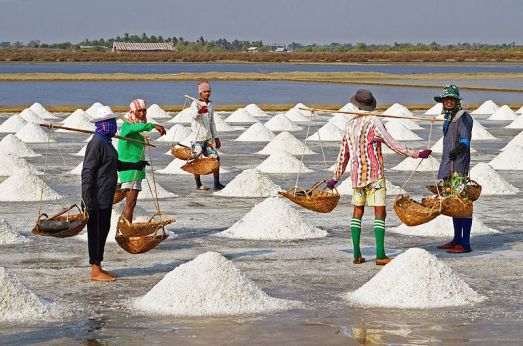
- Tikka masala mix: Like curry this may fall in your intermediates or special spices section. Tikka masala is a special mixture of spices (just like curry) that creates a unique flavor, used to create the dish tikka masala, an Indian dish that can be dry or served in a cream sauce. It is absurdly tasty and getting the pre-made spice will save you a great deal of time.
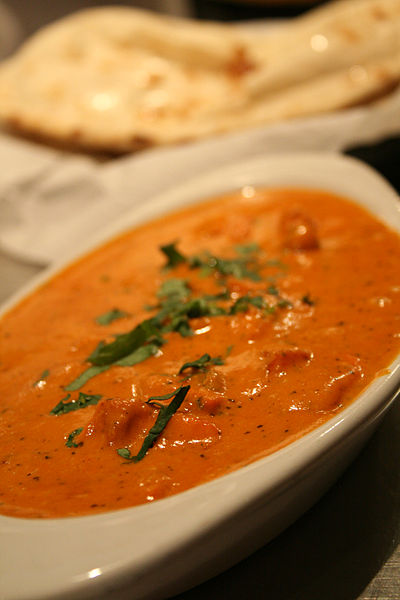
Level 2: The Intermediates
- Dill: Dill would have made my primarily list except I personally hate the flavor of it, and it’s my list so I get to do what I want! Its only saving grace for me is that it’s a staple in borscht, and borscht has got to be one of the best soups in the world. It should therefore come as no surprise that Poland loooooves its dill and if you want to cook Polish food you need to put this up into your basics category. The spice is used in dill pickles (obviously) and a fairly common addition to cream sauces. It’s not bad with certain fishes, either. Okay I guess it’s not so bad.
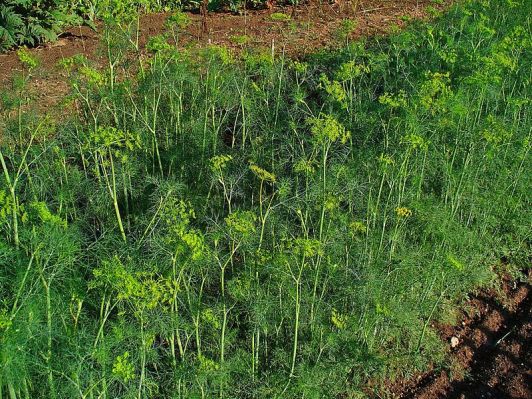
- Fennel: Whenever I see that I have fennel, I think, “…what the hell is that again?” It’s too bad I forget, because it’s a pretty interesting seed. It’s another of the anise-like flavored seeds which adds a wonderful dimension to any number of Middle and far Eastern dishes. It’s great with fish, and yet another common soup item. Here’s a tasty fun fact about fennel: the anethole in fennel makes you fart and it stops you from forming more farts (the technical term is a carminative). Have it in a tea if you’re driving your bed partner insane with uh… nighttime toots.
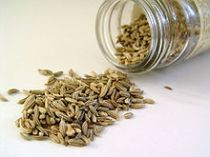
- Mint: I don’t like dried mint, I’ll say that right now. I’m a firm believer in using fresh mint, which is far more flavorful, however, in a pinch, it’s good to have in the cupboard. The main reason I think it’s useful to have around is to use as a tea if you want to settle your stomach. Otherwise, I recommend just using the real deal. It is usually a relatively inexpensive fresh herb.
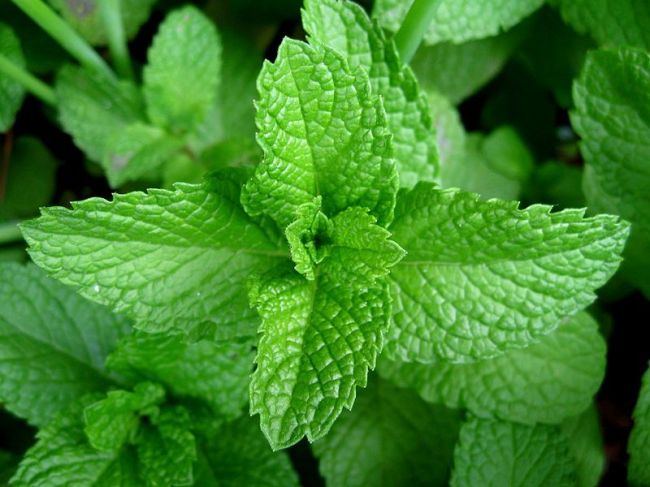
- Sage: Another evergreen spice, sage is wonderful to use as a stand-out flavor. For example, chicken sauteed with a sage sauce, or pumpkin gnocchi with sage butter. It works very well on its own as it has a distinct yet somehow delicate flavor. Nonetheless it can also fit in well with other spices, especially other evergreens. You may smell sage and think of Thanksgiving, as many people put it on their turkey. As for health advantages, there are a number of sources (unfounded) suggesting it aids in memory, and is therefore good in treating Alzheimer’s, but I haven’t found anything reputable to back it up. No worries, it’s delicious whether or not you remember eating it.
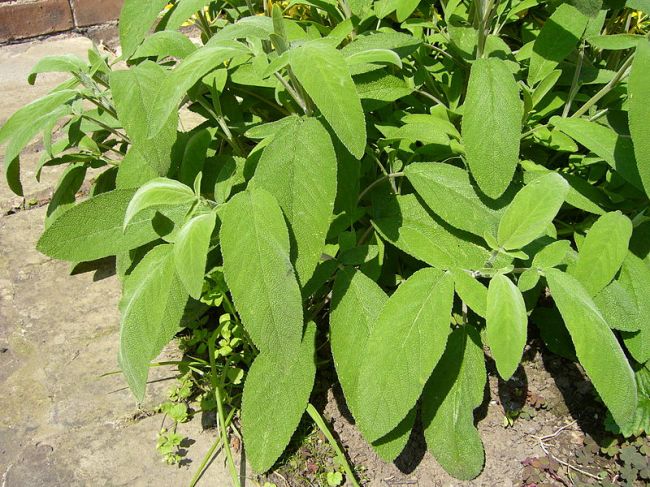
- Tarragon: I’ve only recently begun to use this fascinating spice. It’s a staple in French cooking but needn’t stop there. Expect it to have a very slight anise property. Try it as a feature in rice or chicken as you would rosemary. This is one of the four fines herbes, a combination of four herbs used in Mediterranean cooking, especially in France. If you’re Slavic you know this spice because it’s the star in potica cake. Obviously this is a spice you can use for both savory and sweet excursions and warrants a great deal of experimentation.
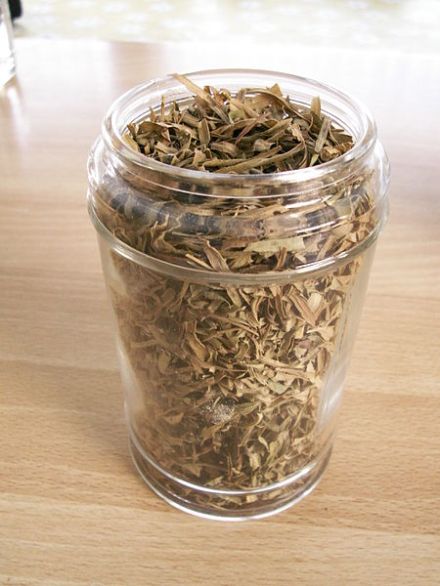
- Thyme: I struggled with whether or not this should go in the “basics” category, but frankly, when I wasn’t cooking much, I didn’t use it much. Now I use it all the time. I think it should be used all the time. First of all it’s fantastic in soup stocks. You literally just throw a handful of sprigs in there (you don’t need to cut them or anything) and you can add some dried thyme if you like, and just let it simmer for hours. The taste is incomparable. “Best chicken broth I’ve ever tasted” were the words uttered by several separate people when I used it to make chicken stock. And I concur. And I wouldn’t say that lightly. Thyme is fantastic. The thing is, fresh thyme is more potent than the dried version, unlike many other herbs. It has a shelf-life of about a week in the fresh form, though, so for the sake of convenience it’s good to have around dried. When you’re using fresh thyme, if you need individual needles rather than a sprig, just kinda rip them off with your hands, it isn’t that hard. Or you can use the edge of a knife or a fork or something. Easy. Randomly, thyme is a sanitizing agent that will help you get over a cold if made into a tea. Little-known fact, Egyptians thought it was an awesome herb, too, because it was involved in the embalming process. But um, please just use it for cooking.
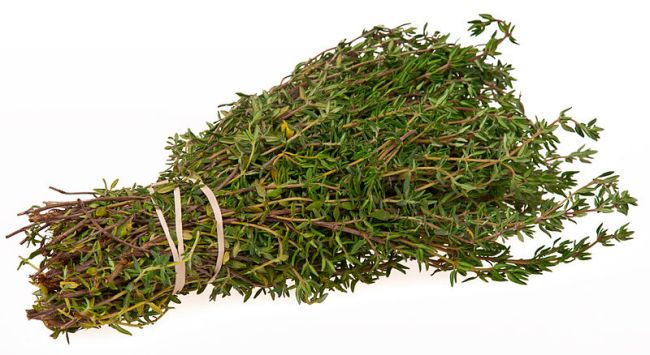
- Turmeric: If you like Indian food, get this spice. It will instantly take you there. It’s a wonderful, fiery spice with a beautiful, bright flavor and color. When you’re using it, be careful to wipe it off your counter and wash your hands right away or they will be stained a light orange color for days (or in the case of your counter, perhaps forever). It’s a small price to pay for what I consider a member of the spice royal family. I won’t waste space here listing the plethora of documented health benefits of turmeric, but it practically cures you of everything, aside from being delicious. Try it in a stir fry with shrimp, fresh-cubed mango, shallots, scallions, and garlic. You’re welcome.
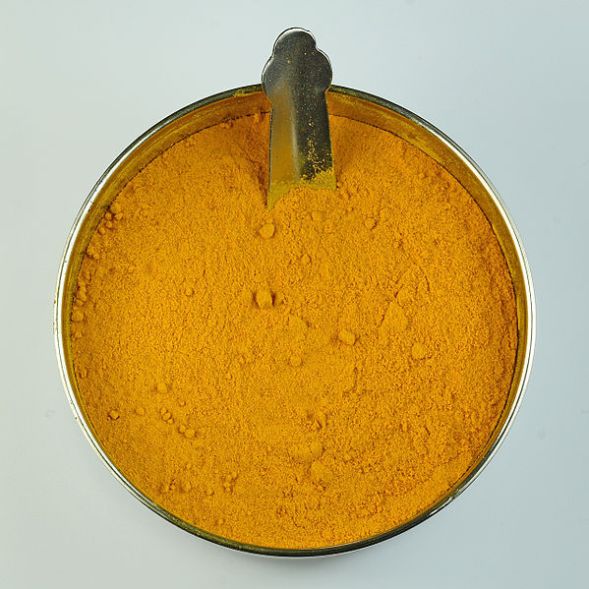
Level 3: The Special Spices
- Anise, dried stars or powdered: To be the hit of the party, have a few dried anise stars on hand throw them into a pot with a little sugar, orange juice, cinnamon sticks, orange peels, lemon peels, nutmeg, cloves, ginger, and a bit of red wine. Simmer for a few minutes then put the rest of the wine in there, turn down the heat and stir occasionally for around 5 minutes. Voila, you have delicious mulled wine and people will think you’re fancy. Powdered anise can be used for sweet cakes and cookies or savory items. Give it a whiff to make sure you like it–if you like black licorice, you like anise, but it isn’t for everybody. Also, absinthe has a lot of anise in it. If you’re feeling ambitious you can make your own anise-infused alcohol. Let the internets be your guide. Here’s something for the beloved transitioning and the menopausal: anise contains phytoestrogens, which mimic the effects of estrogen in the body. Hmmmm…
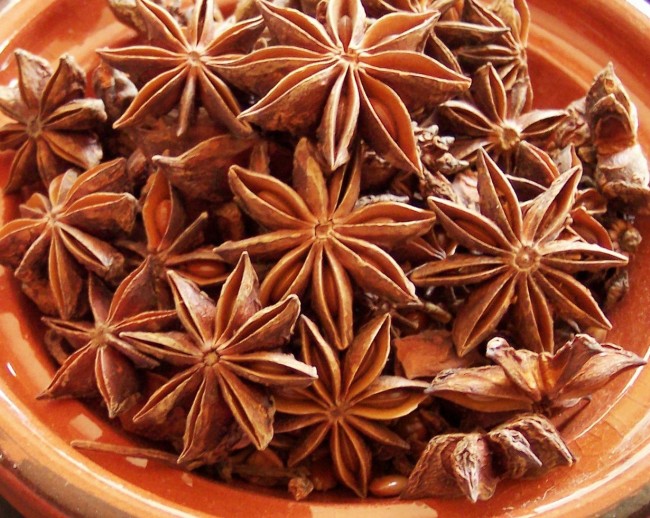
- Cardamom: Another Indian food staple, found most often in garam masala. Yum! It has a very, very strong scent, like curry, so be prepared for your home to smell like it for a day or two. Use it in savory sauces, primarily. This is a fairly expensive spice so be prepared to open your coin purse (do people still have those?) and cry a tear if you want to have it. You may want to get pods instead of ground cardamom and grind it yourself to save money. Cardamom is occasionally found in beverages (though not in the U.S.)–I have yet to taste one, but I can’t wait. It’s a little minty, so perhaps it’s refreshing. I am not aware of any health benefits.
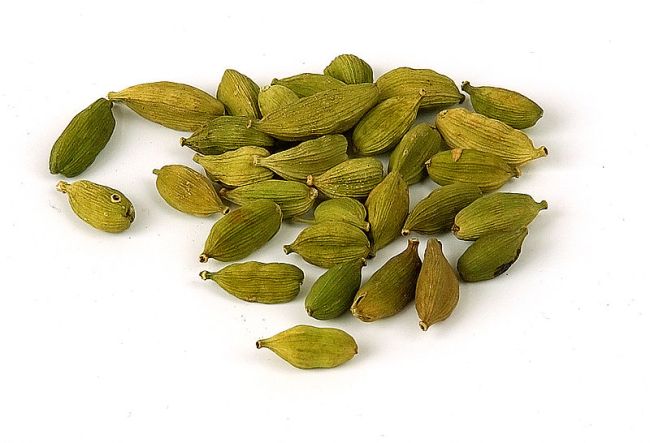
- Cinnamon sticks: To be used in mulled wine (vague recipe listed in the anise section above), but also fabulous in coffee or tea. There are a number of specialty desserts that call for cinnamon sticks as a garnish, and if you really want a high-quality, potent cinnamon taste you can use a cinnamon stick and grate your own powder from it! Some people keep cinnamon sticks in a holey bag in their house because it makes the place smell wonderful, say, in the bathroom…
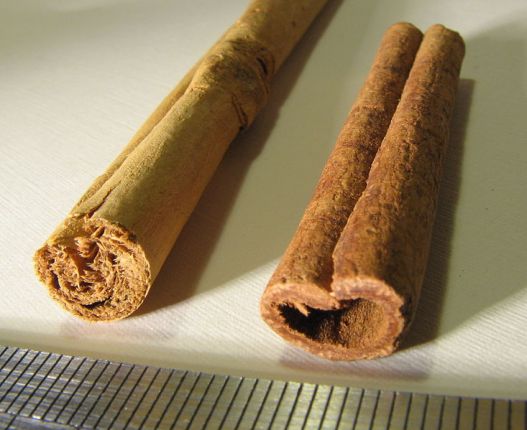
- Lavender (dried): Lavender smells like God. We all know it, it’s one of the best smelling things around. We put it in our perfumes, cleaning solutions, and potpourri in an effort to smell it all the time. We even put big dried lavender bouquets in our homes so we can be immersed in the waft of the angels. So imagine my extreme delight when I learned you can actually eat this stuff–there is culinary-grade lavender available for people right on Amazon.com (I got this one, half a pound for a little over 10 bucks, http://www.amazon.com/Lavender-Flowers-Pound-France-culinary-ultra-Blue/dp/B000RRJVPG/ref=sr_1_1?ie=UTF8&qid=1374205015&sr=8-1&keywords=culinary+grade+lavender). It is especially important to keep this one in the dark. There are a number of ways you can use dried lavender in baked goods that will make your friends think you’re Martha Stewart without that whole felony thing. Additionally, you can use it to make lavender-infused liquor or lavender simple syrup and mix a cocktail worthy of Death & Co. All you need is some cheese cloth for straining. Saying lavender simple syrup is delicious is like saying rainbows are sorta pretty looking.
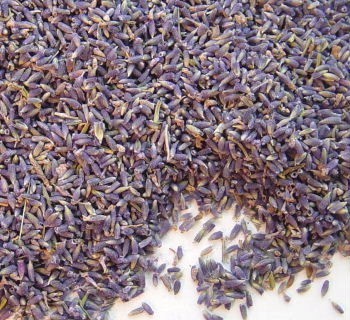
- Paprika variations (e.g., Hot Hungarian and Smoked): Who needs regular paprika? Not you! When you taste a paprika variation you find yourself wondering what the use of regular paprika really is. The “triple-paprika soup” I mentioned in the “basics” section was comprised of regular paprika, smoked paprika, and Hungarian paprika. It was pretty fantastic and very unusual–you don’t get a lot of dishes featuring this spice. But I urge you to consider a paprika variation to make a dish calling for paprika more interesting. I’ve never been sorry.
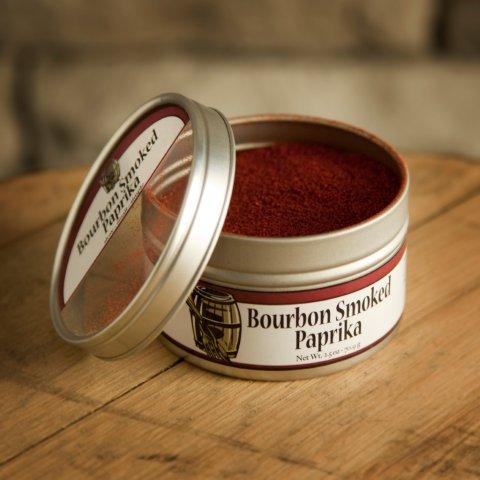
- Pepper variations (white and other): Much like specialty salts, peppers other than black pepper have subtly different flavors than traditional black pepper and work best atop precooked meals. White pepper is very mild, for example, so if you want to have pepper in a dish but need something less severe than black pepper, try out white. The best thing to do is to taste each one on their own and note the little differences. If you’re really interested, get yourself some kind of sample pack with different colors so you can experiment. Also, with these types of peppers, it’s always best to have whole pepper corns and a grinder. Otherwise, you miss the discriminating differences.
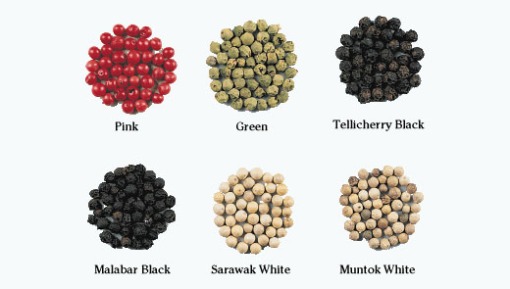
- Saffron: Saffron is a delicious pain in the ass that has a long, rich history. It costs a huge amount of money and comes in strands that you have to grind yourself with a mortar and pestle, then soak them in hot (but not boiling or you’ll ruin it) water before using. It’s a beautiful bright yellow color, on the plus side, but it stains everything, on the negative side. Absolutely delicious in rice and pretty much anything else, but rice seems to be the staple go-to carrier for it. If it were more convenient and less than a million dollars an ounce to use I’d probably put it into everything. One study claims that “mildly overweight, healthy women” snack less between meals when they have more saffron (http://www.nrjournal.com/article/S0271-5317%2810%2900065-5/abstract). Uh, okay, internets. Maybe it’s because they’re so busy preparing it and don’t have the time to eat. And by the way, every time you cook with saffron, you will be rewarded by someone walking in and saying, “Oh my GOD it smells good in here, what in the world are you cooking?” Ergo, good for the self-esteem. 😉 Look below to see what the process of preparing saffron looks like. Pretty isn’t it?
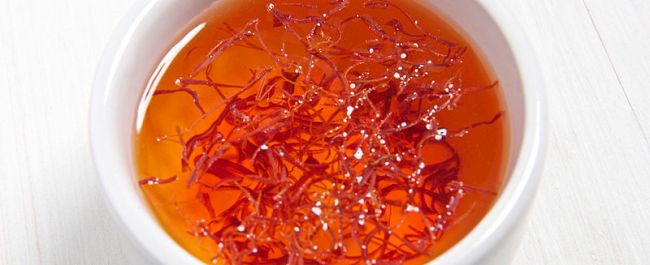
- Salt variations (e.g., smoked salt, flavored salts, and gourmet salts): If you get a special salt, you don’t want to use it in a cooked meal. This is something for the end product like the topping of a vegetable, just like the special peppers. In other words, you want to present it in such a way as to feature the flavor of the salt. Smoked salt tastes smokey, duh, but it’s often too subtle if cooked. Flavored salts are a lot of fun. The most “hip” of flavored salts right now is bacon-flavored salt. It is what it says it is, and you can go ahead and put a little on a chicken sandwich or something and trick yourself into thinking you’re having some bacon, too. Bacon can’t make anything BAD. And then you have the gourmet salts from places like the Himalayas and Hawaii that come in interesting naturally occurring colors like pink, red, and black. I have a green salt. Each one has a subtle under flavor, which come from the different minerals in the surrounding areas. Subtle. SUBTLE. Use these salts only with something that has practically no flavor on its own and consider the salt the feature item on the menu. Perhaps in an appetizer. Incidentally, some of these fun salts are great on ice cream if you’re into the whole sweet and salty deal.
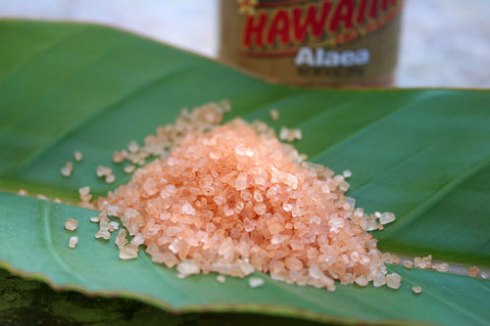
And after all that, there are so many more spices to enjoy, so many more flavors to experience. But the above should provide you with a very good starting point at least and a few will even wow your friends, your partner if you have one, your family, and certainly yourself. Cooking is art, and spices are an integral part to creating your masterpiece. Get familiar with each spice and learn how you can turn what it is–a simple powder–into a moment of pure bliss.
Citations
Photography in Level 1: The Basics
- Basil (dried): The image of dried basil provided was taken by Wikipedia user Henna.
- Bay leaves: Sonja Pauen gives us the image of three Cinnamomum tamala et Eberm.
- Black pepper: (no attribution)
- Cayenne pepper: The Capsicum frutescens cultivar extravaganza image comes to us thanks to Wikipedia photographer Eric in SF.
- Chili powder: This interesting image is chili powder (among other spices) for sale in Bolivia, taken by Joe Carrasco.
- Cilantro, or, Chinese Parsley, or, Coriander: A scene of coriander (Coriandrum sativum) leaves is brought to us by Thamizhpparithi Maari.
- Cinnamon (ground): Photographer L. Shyamal shows us some cinnamon leaves, Pithoragarh, Himalayas, India.
- Cloves (ground): This image is brought to you by americanspice.com.
- Cream of tartar: (no attribution)
- Cumin (ground): Here we have examples of whole cumin seeds and ground cumin taken by Wikipedia user “Henna”.
- Curry (mild, medium, and/or hot): If you go the the Egyptian spice-bazaar in Istanbul you can see curry in giant containers like this one, but since it’s a little expensive to travel, thanks are due to Thomas Steiner for taking this colorful picture for us.
- Garlic powder: Photographer David Goehring (http://www.flickr.com/photos/carbonnyc/254024916/) shows us that garlic leads to peace (I can’t believe this exists).
- Ginger powder: Image by Anna Frodesiak, taken in Haikou, Hainan, China.
- McCormick’s Grill Mates Montreal Steak Seasoning: (no attribution)
- Mustard (ground): This unique iconographic comparison of mustards (the top right is ground mustard) was created by Rainer Zenz.
- Nutmeg (ground): Brocken Inaglory exquisitely captures the colorful red veining of this Myristica fragrans nutmeg.
- Old Bay Seasoning: (no attribution)
- Onion powder: Wikipedia contributor “Colin” offers this mixture of onion varieties.
- Oregano, or Sweet Marjoram: The image of dried culinary oregano was photographed by Wikipedia contributor “Henna”.
- Paprika: An example of Spanish paprika is provided by Wikipedia contributor “Badagnani”.
- Parsley (Italian): An example of Petroselinum crispum (parsley) is given by H. Zell.
- Rosemary: Wikipedia contributor “THOR” (awesome) gives us this stunning close-up of Rosmarinus officinalis.
- Salt (iodized), or fine grain or flaky sea-salt: Picture by JJ Harrison; Description: Salt farmers harvesting salt, Pak Thale, Ban Laem Phetchaburi, Thailand
- Tikka masala mix: A picture of chicken tikka masala and naan taken by Michael Hays is used to exemplify the spice mixture in a dish.
Photography in Level 2: The Intermediates
- Dill: Thanks are owed to Wikipedia contributor “H. Zell” for this image.
- Fennel: An example of fennel seeds is shown by Wikipedia contributor “Howcheng”.
- Mint: The lovely image of mint leaves below comes to us courtesy of Kham Tran (www.khamtran.com).
- Sage: This picture of sage leaves brought to you originally by Wikipedia contributor “Nabokov”.
- Tarragon: A photograph of dried tarragon leaves was uploaded to Wikipedia user “KVDP”.
- Thyme: This gorgeous thyme bundle was captured by Evan-Amos.
- Turmeric: Sanjay Acharya shares with us an image of turmeric powder, which highlights its vibrant hue.
Photography in Level 3: The Special Spices
- Anise, dried stars or powdered: A gorgeous depiction of anise stars is made available at ZamouriSpices.com.
- Cardamom: Provided here are some lovely cardamom pods (Cardamom Elettaria cardamomum) photographed by Luc Viatour of http://www.lucnix.be.
- Cinnamon sticks: Thanks to Antti Vähä-Sipilä for this ceylon cinnamon stick image.
- Lavender (culinary-grade, dried): (no attribution)
- Paprika variations (e.g., Hot Hungarian and Smoked): (no attribution)
- Pepper variations (white and other): (no attribution)
- Saffron: The process of preparing saffron is depicted by Wikipedia contributor “THOR”.
- Salt variations (e.g., smoked salt, flavored salts, and gourmet salts): Penandfork.com has provided a rather artistic depiction of Hawaiian pink salt for us.

